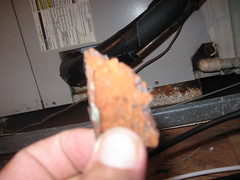Secrets to Filling the Punch Bags
If you look on the internet (just accomplish a Google search on filling a boxing bag) for questions surrounding the topic of punch bags, a vast whole of questions are about how to fill a punch bag. The main question habitancy have is what material do I use?
Secrets to Filling the Punch Bags
Secrets to Filling the Punch Bags
Secrets to Filling the Punch Bags
Secrets to Filling the Punch Bags
I've seen answers given including: "fill it with water" or "use sand" or even better - "grass" - Lol. Water, sand is fine, but it no ifs ands or buts does depend on the heavy bag and the material the shell was made out of... Trust me, if you fill a regular punching bag with water, you could be in a lot of trouble... And you might need to buy a mop!
You can't use grass because it will smell. In addition, grass just don't pack well. The bag will be way too soft. If you disagree, well, do this: Cut your lawn and fill a garbage bag with grass. Try punching it... You'll get the point.
So for this article, I'm going to tell you what you need to know about filling a boxing bag. And I'm giving it all away based on years and years of palpate at both dojos and boxing clubs.
The first foremost episode to always keep in mind when filling the punch bags is the outer shell. I've had many of my students (unfortunately on a lower budget) come to me saying - what kind of material should I use so my aunt can sew me a bag? My reply - if you want to spend a lot of time & money buying material over and over, then you can do this.
Ok, what about buying a sack? A sack isn't supposed to be hit with hard punches over and over. It wasn't made to withstand that kind of pressure. Again, like I said earlier, go this route if you're wanting to waste time and money. The best thing to do if you don't want to buy a punching bag that is already filled is get an unfilled bag. They were made to fill!!! Make sense?
And quite often, unfilled bags are cheap... Because it's no ifs ands or buts the filler for the most part that distinguishes say Everlast from Tko or Aries.
So we don't have Everlast's special engineered filler... Now what!? The next thing to keep in mind is the compel / stiffness levels of punch bags. Some heavy bags feel like hitting a brick wall... Well, to the beginner it may seem this way. Others are like hitting a bag of grass... Well, not that soft (at least we hope not!) but you get where I'm arrival from.
There are a range of different materials you can use to fill a boxing punch bag. Through years of palpate filling bags, the hands-down best way, in my opinion, is to fill the boxing bag with a blend of materials.
Here are materials you can use to fill boxer bags with:
* Cotton
* Wool
* Air
* Mattress Foam
* Water
* Clothes
* Saw Dust
* Feathers
* Rice
* Sand
* Styrofoam
* Rolled up and tightly packed garbage bags
* Shredded Tires
Now, let's bring this together. If you want a good speed bag, fill it with air.. It's that simple. For heavy bags, this gets a little bit more complicated. I'll tell you exactly what we used to do with the punch bags at the cordial neighborhood dojo when I was in martial arts school... Just don't tell anyone I told you.
I want you to look out for something: If you go to a boxing club or dojo, the majority of the answers you will hear from habitancy about filling a boxing bag is to fill it with sand. Sand is I guess you could say, a coarse filling ingredient... But to people's dismay, it's Not The Only Ingredient in the filler. Professionals can get away with filling boxing bags with sand. Sand will make the bag very stiff. If you're a beginner, no doubt, you will injure your hands.
Here's what the dojos do... And probably nobody will tell you this about filling a punching bag... It's very simple! Here it is... Short and sweet:
Fill with cloth. Then pack it tight. If it's too loose you'll have a deformed punching bag that will be too soft and uncomfortable to hit. The solution?
Use fine sand at the lowest to keep the punch bag essentially a "heavy bag" and keep it's shape. Fill the outer wall with cloth. Sleep mats or army sacks work very well. head somewhere to fill the core of the punch bags you're filling with a mix of feathers and shredded tires and/or any rubber that's available.
Secrets to Filling the Punch Bags
20 Amp Generator Transfer Switch Pampers Wipes Baby Diapers





